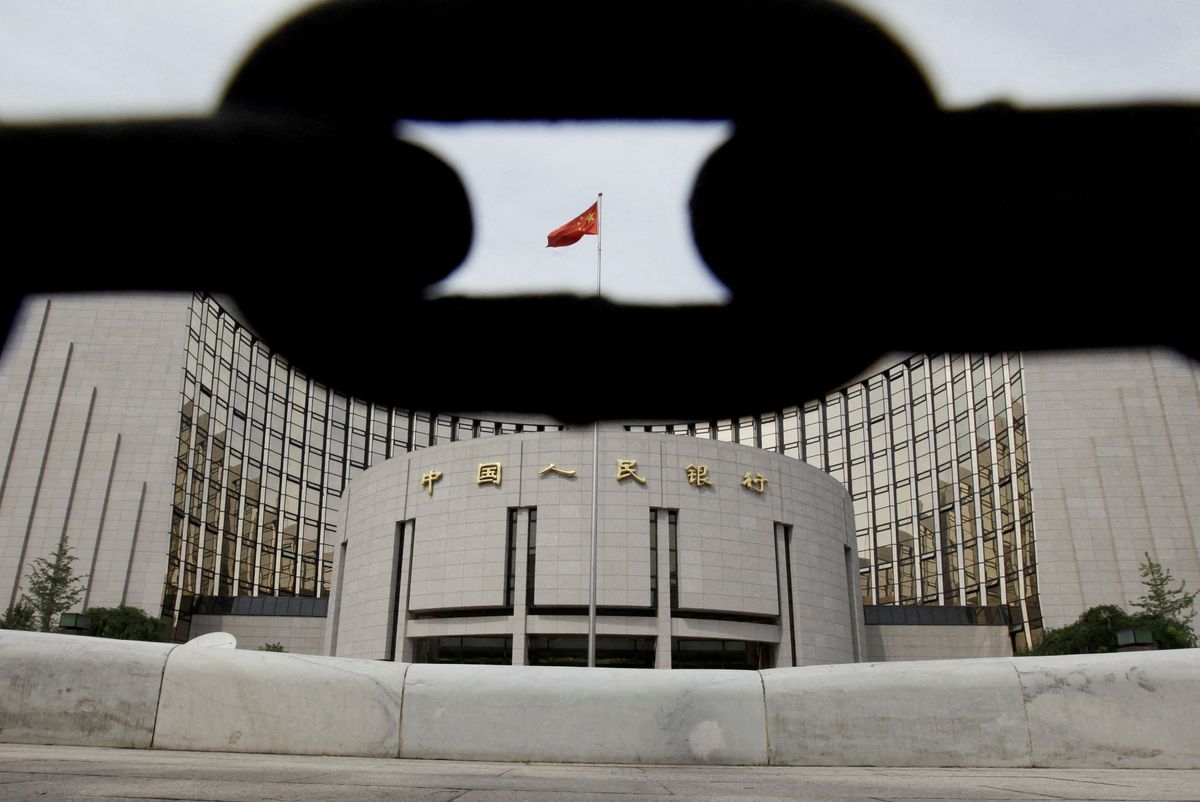China’s central bank makes the largest interest rate cut since 2020
The world's eyes are on China's economic situation, which is working on recovering since pivoting away from the zero-COVID policy stance.

A few minutes every morning is all you need.
Stay up to date on the world's Headlines and Human Stories. It's fun, it's factual, it's fluff-free.
The backstory: The world's eyes are on China's economic situation, which is working on recovering since pivoting away from the zero-COVID policy stance, with figures like US Treasury Secretary Janet Yellen stepping into the conversation. Yellen, in particular, has pointed to it as a significant "risk factor," not only for the US economy but also for the economies of neighboring Asian countries. China has the second-biggest economy in the world, so how things are going there can have a ripple effect across global markets. In fact, in April, the International Monetary Fund predicted that China would be the top contributor to global growth over the next five years.
One of the more recent concerns revolves around the country’s struggling real estate sector. For example, even once-top real estate players like Country Garden are dealing with the threat of defaults. Also, financial conglomerate Zhongzhi has missed two payments this year, which is spooking some investors about possible contagion in the financial sector. According to insiders, China’s banking regulator has already created a task force to look into risks at the firm.
More recently: Pan Gongsheng took over the reins as governor of the People's Bank of China (PBOC) from Yi Gang last month. But his tenure has already faced challenges. Recent data points to a downward trend – bank loans hit a 14-year low in July, alongside deflation pressures and further falling exports. Breaking it down – in July, China's industrial output saw a 3.7% year-on-year growth, falling short of the projected 4.4%. Retail sales also showed slower growth and missed estimates at 2.5% for the same period.
Also, in July, policymakers announced more measures to prop up the economy and boost its recovery. These included steps to promote private investments, “restore and expand” consumption and boost car ownership, especially in the new energy sector.
The development: The PBOC, China’s central bank, made an unexpected move on Tuesday by slashing a significant interest rate. It decided to lower the rate on its one-year loans, which it calls the medium-term lending facility, by 15 basis points, bringing it down to 2.5%, the biggest cut since 2020. This is the second time it has cut rates since June. The PBOC also trimmed a short-term policy rate by 10 basis points.
And then, later on the same day, the PBOC continued with more rate reductions. It brought down the rates for different types of lending facilities – overnight, seven-day and one-month standing – each by ten basis points. These new rates landed at 2.65%, 2.8% and 3.15%, respectively. While some economists had boosted sentiment after these cuts, others are saying bigger steps are needed to really turn the situation around.
Key comments:
“The PBOC rate cuts today set the stage for looser liquidity conditions that could eventually support an even bigger fiscal push,” said Louise Loo, lead economist at Oxford Economics to Bloomberg. “So that is encouraging.”
“The weak July credit data suggest the downward spiral of the property sector continues, and worsening geopolitical tensions add to the uncertainty,” said Lu Ting, chief China economist at Nomura, and a team in a report last Friday.
“China’s slowdown will have the largest impact on its Asian neighbors, but there will be some spillovers to the United States,” said Treasury Secretary Janet Yellen earlier this week.
“China’s activity data show the economy skidding into the second half of the year – clear reason for the swift and unusually large rate cut Tuesday. The readings on production, investment and consumption all undershot expectations, showing June’s rate cut didn’t move the dial,” said Bloomberg economists David Qu and Chang Shu.




Comments ()